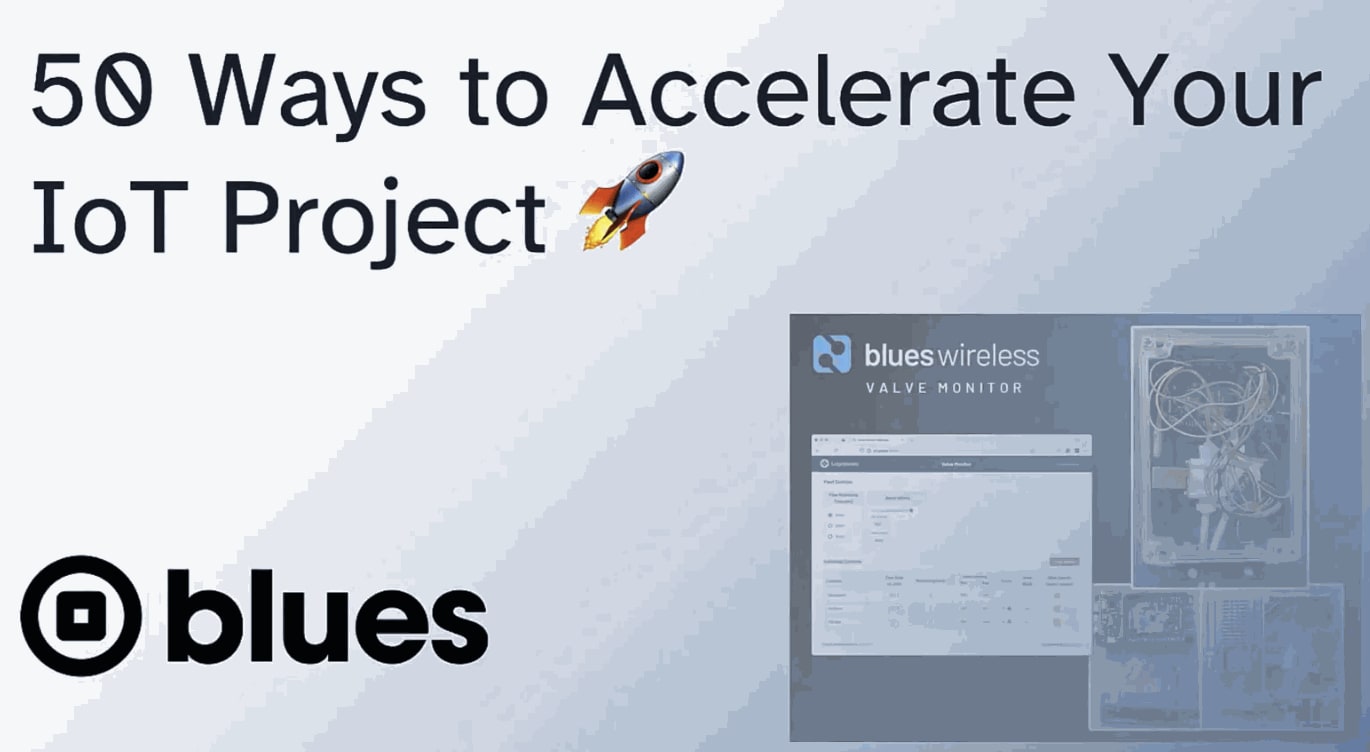Webinar Summary
The following summary is auto-generated from the webinar recording.
Welcome everyone! Today, we're diving into the "Blues Accelerators"—over 50 purpose-built IoT applications designed to help you speed up your projects. All of these applications are free, open source, and ready to be deployed or customized to fit your needs. Let’s jump right in!
What Are Blues Accelerators?
Blues Accelerators are not only applications but also a toolkit for developers who are keen to create state-of-the-art IoT solutions. They span a wide array of scenarios, for example, a coherence of disconnected power and the interplay of a smart city with connected kiosks. These accelerators are built with user experience in mind, so you can easily adapt them according to your specific requirements.

Getting Started with Blues
Prior to presenting demos, I will give a brief run-through of some important features. The core aspect of our IoT setup is the Notecard and Notehub. Notecard, a cellular IoT module, is equipped with 500MB of free data and 10 years of global service, all with no monthly subscription!
Notehub, on the other hand, acts as a cloud service that works seamlessly with the Notecard. Together, they create a device-to-cloud data pump, allowing you to easily send data from your devices to various cloud applications like AWS or Azure.

Accelerator Demos
Power Outage Monitor
First up is the Power Outage Monitor. Imagine being alerted via SMS if your power is cut. This application is perfect for monitoring critical devices like cold storage units. Setting it up is incredibly straightforward: you only need to send two requests to the Notecard!
After configuring the Notecard, you can cut the power and receive an SMS alert. This is all done through Twilio, which makes the integration seamless and easy.
Cellular-Connected Kiosk
Following that is the Cellular-Connected Kiosk demonstration. This is an application that can showcase information like the weather and grocery shop availability without the need for a Wi-Fi connection. You will be able to create this kiosk rapidly with the help of a Raspberry Pi and a Notecard.
Only with a few Python scripts can you set up your web application in no time. Kiosk can even update its content automatically according to the schedule you set, which makes sure that you always upload the freshest content.
Valve Monitor
Our third demo is the Valve Monitor. This application allows you to control water flow and monitor it in real-time. Using a web app, you can easily close or open the valve and receive alerts if the flow rate exceeds a certain threshold.
This arrangement is ideal for agricultural applications or any circumstance that emphasizes the importance of water management.
Indoor Floor-Level Tracker
Next is the Indoor Floor-Level Tracker. This device measures barometric pressure to determine the floor level within a building. It's particularly useful for emergency response teams who need to know their team members' locations in real-time.

It's a no-brainer to install this application, and it enables real-time monitoring of different devices simultaneously.
CAN Vehicle Monitor
Our fifth demo showcases the CAN Vehicle Monitor, which can log data from your vehicle's CAN bus. This application is essential for fleet management and predictive maintenance.
The most helpful tools for fleet managers are the Notecards that easily collect the data and come with the capabilities of monitoring several metrics from the vehicle.
ML Audio Classifier with Edge Impulse
Finally, we have the ML Audio Classifier. This application uses machine learning to classify audio signals, such as detecting a running faucet versus background noise. The model runs on our Swan MCU and can send alerts when specific sounds are detected.
Using Edge Impulse, you can easily train and deploy your models, making this application a powerful tool for various use cases.
Wrap-Up and Resources
That wraps up our demos for today! Each of these accelerators is designed to be free and open source, allowing you to clone, hack, and adapt them as needed. For more information, check out all the accelerators.
